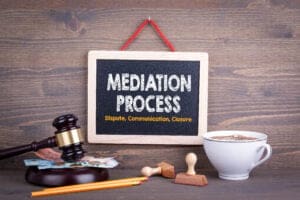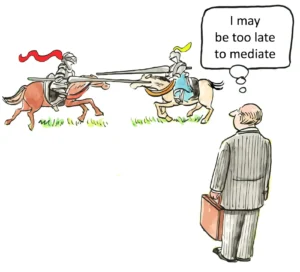How to Fight Google’s Controversial Content Restrictions
How to fight Google’s controversial content restrictions has become one of the most pressing questions for legal professionals, content creators, and citizens concerned about free speech in the digital age. Google’s vast influence over information access makes understanding your legal options against platform censorship not just important—it’s essential for protecting fundamental rights in our increasingly connected world.
The search giant’s content moderation policies have evolved dramatically since 2020, often catching users off guard with shadowbanning, demonetization, and outright removal of content that doesn’t violate clear legal standards. Understanding how to challenge these decisions requires navigating complex intersections of First Amendment law, antitrust regulations, and emerging digital rights doctrine.
Why Google’s Content Restrictions Spark Legal Controversy
Google’s content policies operate in a legal gray area that has generated significant constitutional debate. Unlike traditional publishers, Google maintains it functions as a neutral platform while simultaneously making editorial decisions about content visibility and accessibility.
The company’s content moderation practices have faced scrutiny from conservative lawmakers who argue that Google systematically suppresses viewpoints that don’t align with liberal political perspectives. Congressional investigations have revealed internal communications suggesting coordination between tech companies and government officials to restrict certain types of content, particularly around COVID-19 information and election-related discussions.
Section 230 of the Communications Decency Act has historically shielded platforms from liability for user-generated content while granting them broad discretion to moderate that content. However, recent legal challenges have begun to test the boundaries of this protection, particularly when platforms engage in what critics characterize as viewpoint discrimination.
Are Content Restrictions Legally Enforceable Against Google?
The legal landscape surrounding content restrictions has shifted considerably following recent Supreme Court decisions. In NetChoice v. Moody, the Court provided crucial guidance on when states can regulate social media platforms’ content moderation practices without violating the First Amendment.
The Court clarified that content moderation policies constitute protected editorial speech in many contexts, but this protection isn’t absolute. Government regulation can be permissible when it serves compelling state interests and uses content-neutral means to achieve those objectives.
Private lawsuits challenging content restrictions face significant hurdles under Section 230, but several legal theories are gaining traction. These include breach of contract claims based on platform terms of service, deceptive trade practices allegations, and civil rights violations under 42 U.S.C. § 1981 for content creators who face discriminatory enforcement.
What Constitutional Rights Apply to Digital Platform Disputes?
The First Amendment’s application to private platforms creates a complex legal framework that varies depending on specific circumstances. While the Constitution primarily restricts government censorship, recent legal developments have explored when private platforms might be subject to constitutional limitations.
The state action doctrine becomes relevant when platforms act in conjunction with government officials to suppress speech. Recent FTC investigations have uncovered evidence of coordination between the Biden administration and major tech platforms to remove content that didn’t violate stated policies, potentially creating liability under 42 U.S.C. § 1983 for civil rights violations.
Due process concerns arise when platforms fail to provide adequate notice and opportunity for appeal before removing content or suspending accounts. While private companies aren’t bound by constitutional due process requirements, contract theories and consumer protection laws may impose similar obligations.
Which Legal Strategies Prove Most Successful Against Big Tech?
Successful challenges to Google’s content restrictions typically combine multiple legal approaches rather than relying on single theories. The most effective strategies leverage antitrust law, consumer protection statutes, and emerging digital rights frameworks.
Antitrust litigation has gained momentum following federal court findings that Google maintains illegal monopolies in both search and digital advertising markets. These decisions create precedent for challenging content restrictions that leverage Google’s market dominance to suppress competition or control information flow.
State-level initiatives have produced mixed results but establish important precedent. Florida’s Stop Social Media Censorship Act and similar Texas legislation face ongoing constitutional challenges, but they demonstrate growing political support for regulating platform content decisions.
Contractual and Consumer Protection Approaches
Platform terms of service create binding contractual obligations that can be enforced through traditional litigation. Successful cases have established that platforms cannot arbitrarily change enforcement standards or selectively apply policies based on content creator characteristics.
Deceptive trade practices claims focus on gaps between platforms’ public representations about neutrality and their actual enforcement patterns. These cases don’t require proving constitutional violations but instead demonstrate that platforms misrepresent their services to users and advertisers.
How Can Individuals Challenge Unfair Content Moderation Decisions?
Individual content creators have several practical options for challenging Google’s content restrictions, ranging from administrative appeals to federal litigation. The key is understanding which approach fits your specific situation and legal objectives.
Google’s internal appeals process provides the first line of recourse for most content disputes. The platform maintains separate review systems for YouTube strikes, search result removals, and advertising policy violations. Success rates vary significantly, but properly documented appeals citing specific policy violations or constitutional concerns achieve better outcomes than generic complaints.
DMCA counter-notifications offer another avenue when content removal involves copyright claims. The Digital Millennium Copyright Act provides statutory protections for users who believe their content was wrongfully removed, including potential damages against false claimants.
Documentation and Evidence Preservation
Successful challenges require meticulous documentation of platform actions and their impacts. This includes screenshots of policy violations notices, records of attempts to contact platform support, and evidence of differential treatment compared to similar content.
Financial harm documentation becomes crucial for damages calculations in potential litigation. This includes lost advertising revenue, subscriber counts, and broader reputational impacts that can be quantified for legal proceedings.
When Should You Consider Federal Court Litigation?
Federal litigation against Google requires careful consideration of jurisdictional issues, applicable legal theories, and realistic prospects for success. Recent precedent suggests certain types of cases have stronger foundations than others.
Civil rights claims under Section 1983 may apply when Google acts in coordination with government officials to suppress protected speech. These cases require proving that platform actions were undertaken at the direction or with the significant encouragement of government actors.
Antitrust theories gain strength when content restrictions leverage Google’s market dominance in ways that harm competition. The Department of Justice’s successful monopolization cases against Google create precedent for private parties to challenge anti-competitive content policies.
Class Action Potential
Similar content creators facing comparable restrictions may benefit from class action litigation that spreads costs across multiple plaintiffs while creating economies of scale for complex technical and legal issues.
Injunctive relief often provides more practical value than monetary damages in content restriction cases. Courts can order platforms to restore content, modify policies, or implement procedural safeguards without requiring proof of specific financial harm.
What Alternative Platforms Offer Better Content Protections?
Market-based solutions provide immediate alternatives while legal challenges work through the courts. Several emerging platforms offer more robust content protection policies and transparent moderation processes.
Decentralized platforms using blockchain technology distribute content across multiple nodes, making comprehensive censorship more difficult. These platforms often implement community-based moderation that reduces reliance on centralized corporate decisions.
Traditional media outlets increasingly recognize opportunities to compete with Big Tech platforms by offering superior creator protection and revenue sharing. Email newsletters, podcast platforms, and subscription-based services provide content creators with direct audience relationships that bypass algorithmic filtering.
Building Platform-Independent Audiences
Smart content creators diversify their distribution strategies to reduce dependence on any single platform. This includes maintaining email lists, developing relationships with multiple platforms, and creating content that can be repurposed across different media formats.
SEO optimization for independent websites allows creators to compete directly with platform-hosted content in search results. Understanding how Google’s algorithms prioritize content helps creators maintain visibility even when facing platform restrictions.
What Role Do State Laws Play in Content Moderation Disputes?
State legislation targeting social media censorship has created a patchwork of regulations with varying constitutional standards and enforcement mechanisms. Understanding how these laws apply in your jurisdiction can provide additional legal options beyond federal claims.
Texas House Bill 20 and Florida’s social media law establish new causes of action against platforms that engage in viewpoint discrimination. While these laws face ongoing constitutional challenges, they demonstrate growing state-level support for regulating platform content decisions.
Some states have implemented disclosure requirements that force platforms to publish detailed reports about their content moderation practices and policies. These transparency measures help users understand how platforms make decisions and identify potential bias in enforcement.
State Consumer Protection Enforcement
State attorneys general have begun investigating platform content moderation practices under consumer protection theories that don’t require proving constitutional violations. These investigations can result in consent decrees that modify platform policies or create new procedural protections for users.
Deceptive advertising claims under state law offer another avenue for challenging platforms that misrepresent their neutrality or editorial practices to users and advertisers.
How Recent Court Decisions Impact Your Legal Options
The Supreme Court’s decisions in NetChoice v. Moody and related cases have significantly clarified the legal landscape surrounding platform content moderation. Understanding these precedents helps identify which legal theories have the strongest foundation.
The Court’s emphasis on editorial discretion protects platforms’ rights to make content decisions but doesn’t eliminate all regulatory authority. The decision suggests that content-neutral regulations serving compelling state interests may survive constitutional scrutiny.
Lower court decisions have begun applying these principles to specific content moderation disputes. Successful cases typically involve claims that platforms violated their own stated policies or engaged in deceptive practices rather than challenging their general right to moderate content.
Emerging Legal Doctrines
Algorithmic accountability theories are developing in courts as plaintiffs challenge not just content removal but also the automated systems that determine content visibility and reach. These cases focus on whether platforms adequately disclose how their algorithms work and whether algorithmic decisions constitute protected editorial speech.
Building Effective Legal Strategy: Key Considerations
Successful challenges to Google’s content restrictions require comprehensive legal strategies that address both immediate content restoration and broader systemic changes. The most effective approaches combine multiple legal theories while building strong factual records.
Standing requirements create the first hurdle in federal litigation. Plaintiffs must demonstrate concrete injury from platform actions, not just general disagreement with policies. This typically requires showing specific financial harm, reputational damage, or interference with business relationships.
Jurisdiction and venue selection significantly impact case outcomes. Federal courts in certain circuits have shown greater receptivity to platform accountability arguments, while others remain strongly protective of Section 230 immunity.
Expert Witness Preparation
Technical expert testimony becomes crucial in cases involving algorithmic content filtering or shadowbanning practices. Experts must explain complex technical systems in ways that judges and juries can understand while establishing connections between platform actions and legal violations.
First Amendment scholars provide essential context for constitutional claims, particularly in explaining how traditional free speech doctrine applies to digital platforms and emerging technologies.
Practical Steps for Content Creators Facing Restrictions
Content creators facing Google’s restrictions should take immediate steps to preserve their legal options while working toward content restoration. These practical measures can strengthen potential legal claims while providing interim relief.
Document everything related to content restrictions, including screenshots of violation notices, communication with platform support, and evidence of inconsistent policy enforcement. This documentation becomes crucial evidence in potential litigation.
Maintain backup copies of restricted content on multiple platforms and storage systems. This ensures that evidence remains available even if platforms delete content entirely rather than simply restricting its visibility.
Communication Strategies
Professional communication with platform representatives increases the likelihood of successful appeals and creates better legal records if litigation becomes necessary. Avoid emotional language while clearly stating legal and factual bases for content restoration.
Legal representation often produces better outcomes in platform appeals processes, particularly for high-value content or accounts with significant commercial impact. Attorneys familiar with platform policies can frame appeals in ways that resonate with internal review processes.
Future Outlook: Where Digital Rights Are Heading
The legal landscape surrounding digital content rights continues evolving rapidly as courts, legislatures, and regulators grapple with technology’s impact on traditional legal doctrines. Understanding these trends helps predict how current legal strategies may develop.
Congressional interest in Section 230 reform has intensified across party lines, though specific proposals vary significantly. Some reforms would narrow platform immunity while others would eliminate it entirely, creating very different legal environments for content creators.
International developments, particularly the European Union’s Digital Services Act, provide models for platform accountability that may influence U.S. policy. These regulations establish new transparency requirements and appeal processes that could be adopted domestically.
Technological Solutions
Blockchain-based platforms and decentralized content distribution systems may provide technical solutions to censorship concerns that complement legal remedies. These technologies make comprehensive content control more difficult while preserving creator autonomy.
Artificial intelligence tools for content creation and distribution may eventually reduce platform dependency by enabling creators to reach audiences through multiple channels simultaneously.
The fight against Google’s controversial content restrictions requires understanding complex intersections of constitutional law, antitrust regulation, and emerging digital rights doctrine. While challenges remain significant, recent legal developments have created new opportunities for content creators and concerned citizens to protect their digital rights.
Success depends on combining immediate practical measures with longer-term legal strategies that address both individual cases and systemic platform accountability. As courts continue developing precedent and legislatures consider new regulations, the balance between platform editorial discretion and user speech rights will continue evolving.
The stakes couldn’t be higher. Google’s influence over information access affects not just individual content creators but the broader marketplace of ideas that democracy requires. Understanding your legal options represents the first step in ensuring that technological advancement enhances rather than undermines fundamental rights to free expression and open debate.
Sources:
- FTC Launches Tech Censorship Inquiry – Press Release
- Supreme Court Ruling: Website Content Moderation Rights
- Google Statement: Covid Misinformation and Political Pressure
- Section 230: Recent Court Cases and Legal Solutions
- NetChoice v. Moody: Supreme Court Decision PDF
- Free Speech on Social Media: Comprehensive Legal Guide
- Google March 2024 Core Update: Content Quality Impact
- Legal Challenges in Social Media Moderation for Lawyers













